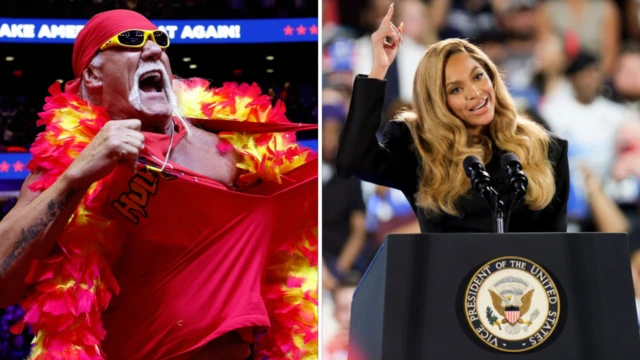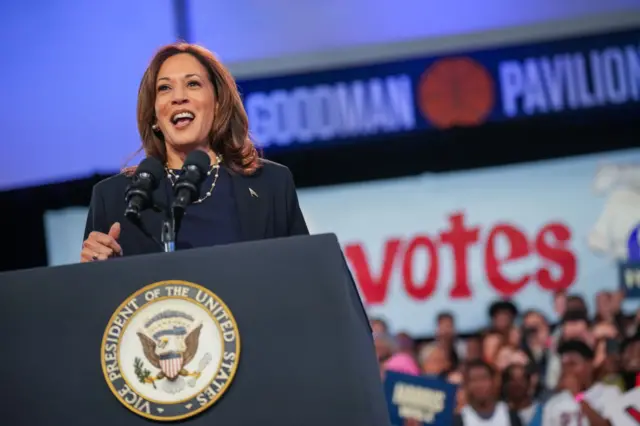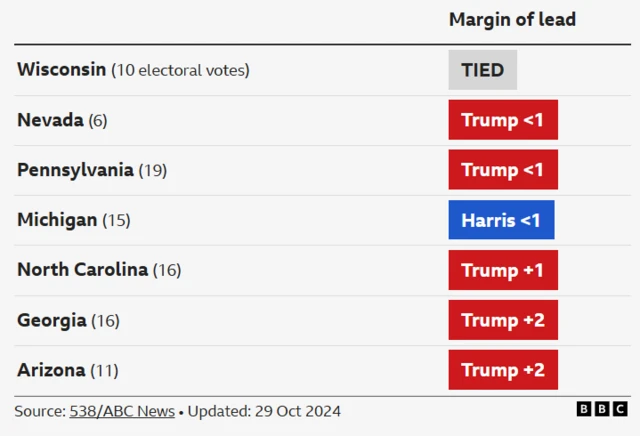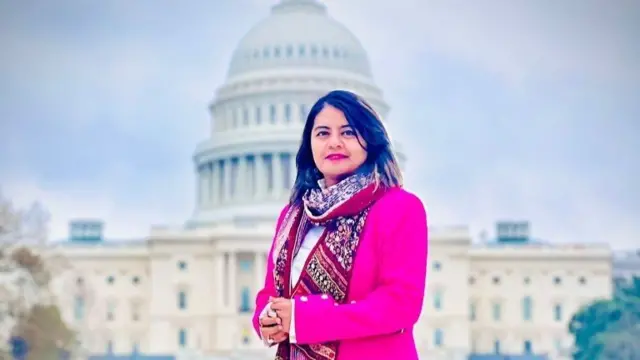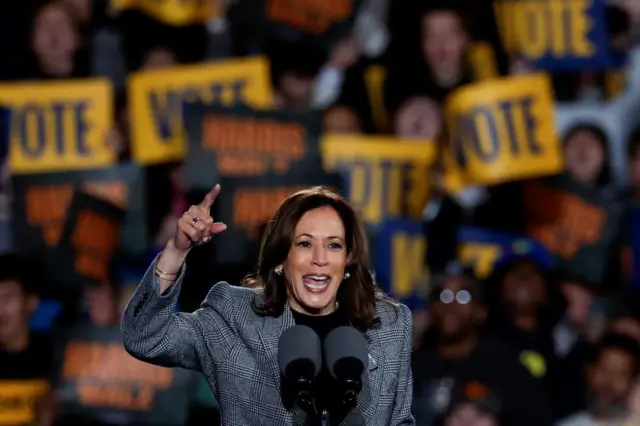
How accurate is pre-election polling?published at 14:54 GMT 29 October 2024
Mike Hills
Visual Journalism
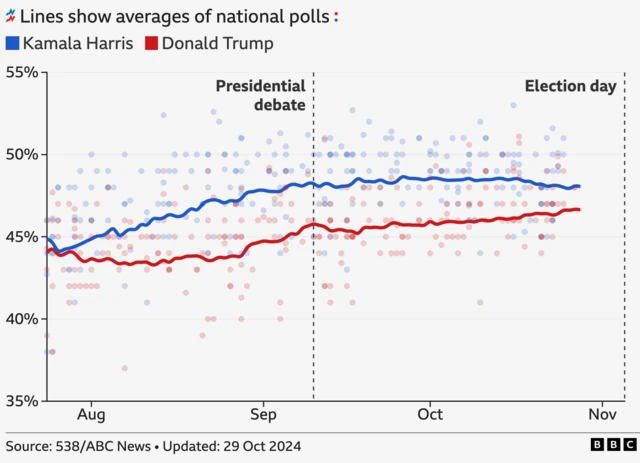
Gabriel from Colchester asks: "I haven't seen anyone mention how big the gap was between polling and results in 2016 and 2020. Shouldn't we be expecting a Trump landslide if the polling is this close?"
It’s true that polls underestimated support for Donald Trump in the last two presidential elections.
Hillary Clinton did win more votes than Trump, but the state polls were less accurate and failed to pick up on his popularity in Democratic strongholds like Michigan, Pennsylvania and Wisconsin.
In 2020, the polling error was the highest in 40 years for the national popular vote, and the highest in at least 20 years for state-level estimates, according to analysis conducted by polling experts.
The polling miss in 2016 was put down to voters changing their minds in the final days of the campaign and because college-educated voters - who were more likely to support Clinton - had been overrepresented in polling samples.
In 2020, the experts pointed to problems with getting Trump supporters to take part in polls, but said it was “impossible” to know exactly what had caused the polling error, especially as the election was held during a pandemic and had a record turnout.
Pollsters have made lots of changes since then, relying less on telephone and more on online methods or combinations of online, mail and telephone, which they hope will help to include hard-to-reach voters in their samples.
According to analysts at 538, the polling industry “had one of its most successful election cycles in US history” in the 2022 midterm elections, which could suggest pollsters have fixed some of these issues.
But Donald Trump wasn’t on the ballot in the midterms and we won’t know until after election day whether these changes can deal with the influx of irregular voters he tends to attract.
You can take a deeper look at national and swing state polling here.

